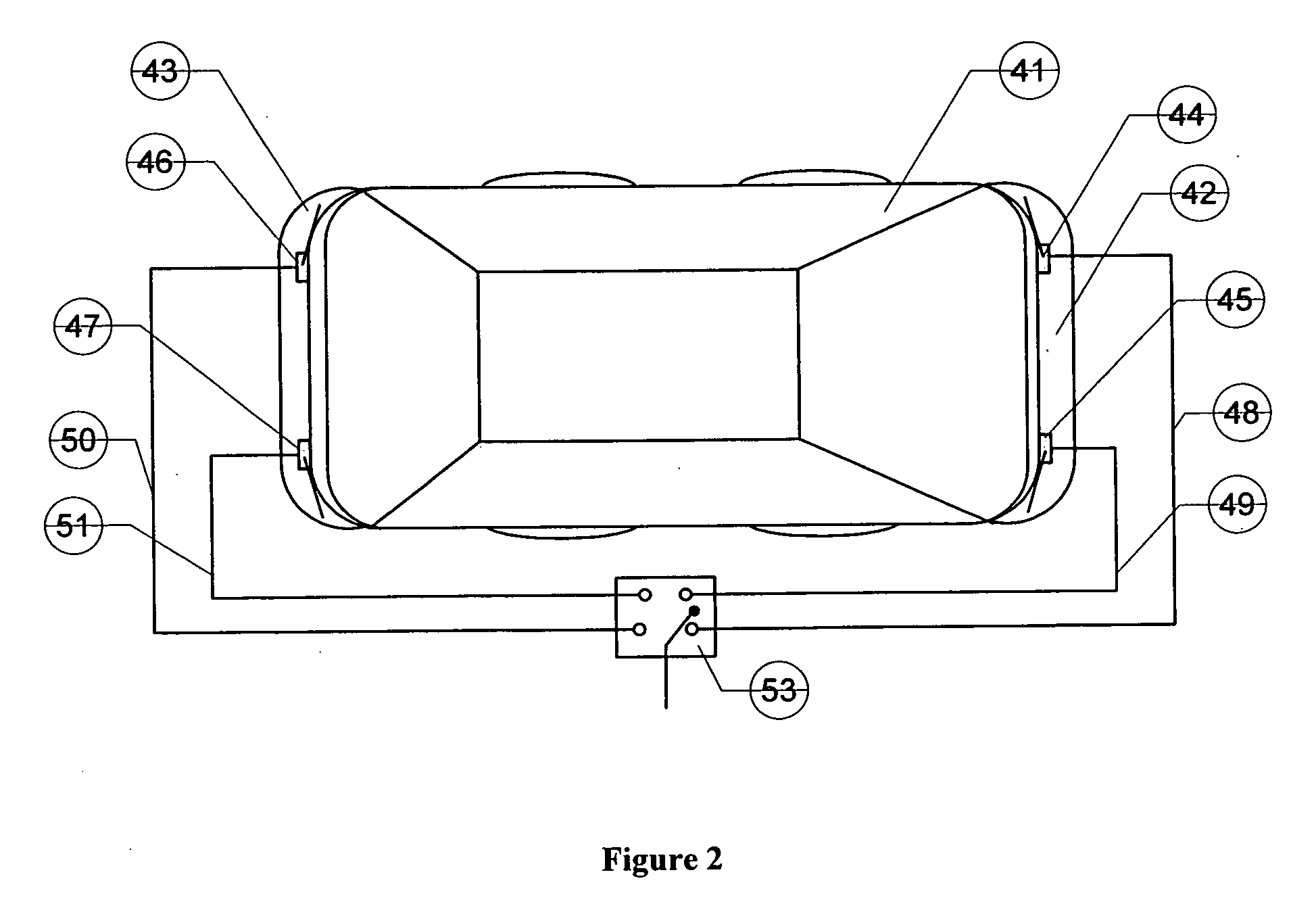Vehicle concealed antenna
a technology for concealed antennas and vehicles, applied in the field of vehicle antennas, can solve the problems of high rf exposure levels, low cost, and inability to disguise antennas, and achieve the effects of low cost, convenient installation and small siz
- Summary
- Abstract
- Description
- Claims
- Application Information
AI Technical Summary
Benefits of technology
Problems solved by technology
Method used
Image
Examples
example
[0059]In the following example, a preferred embodiment is provided in which an integrated antenna assembly is disclosed for concealment within a bumper or non-metallic fender. Referring to FIGS. 4 through 10, the vehicle mounted concealed antenna system disclosed herein includes an antenna radiator 1 (FIG. 5) or 2 (FIG. 6), and a matching circuit network consisting of two capacitor trimmers 3, 4, inductor coils 5 (shown in FIG. 10), environmentally sealed metal mounting base 6 (referred to in the preceding discussion as a housing), feed cable 7 and feed connector 8, antenna output connector 9. The female connectors 8 and 9 are arranged and mounted by hex nuts 10 and o-ring seals 11 into the walls of the mounting base 6.
[0060]A detailed view of a preferred embodiment of the antenna radiator is shown in FIG. 7. The antenna radiator 1 consists of a copper wire 12, dielectric sleeve 54, male connector 13, two copper ferrules 14, braided wire 55, outer jacked 56, and shrink tubing 15.
[00...
PUM
| Property | Measurement | Unit |
|---|---|---|
| flexible | aaaaa | aaaaa |
| dielectric | aaaaa | aaaaa |
| shape | aaaaa | aaaaa |
Abstract
Description
Claims
Application Information
 Login to View More
Login to View More - R&D
- Intellectual Property
- Life Sciences
- Materials
- Tech Scout
- Unparalleled Data Quality
- Higher Quality Content
- 60% Fewer Hallucinations
Browse by: Latest US Patents, China's latest patents, Technical Efficacy Thesaurus, Application Domain, Technology Topic, Popular Technical Reports.
© 2025 PatSnap. All rights reserved.Legal|Privacy policy|Modern Slavery Act Transparency Statement|Sitemap|About US| Contact US: help@patsnap.com



